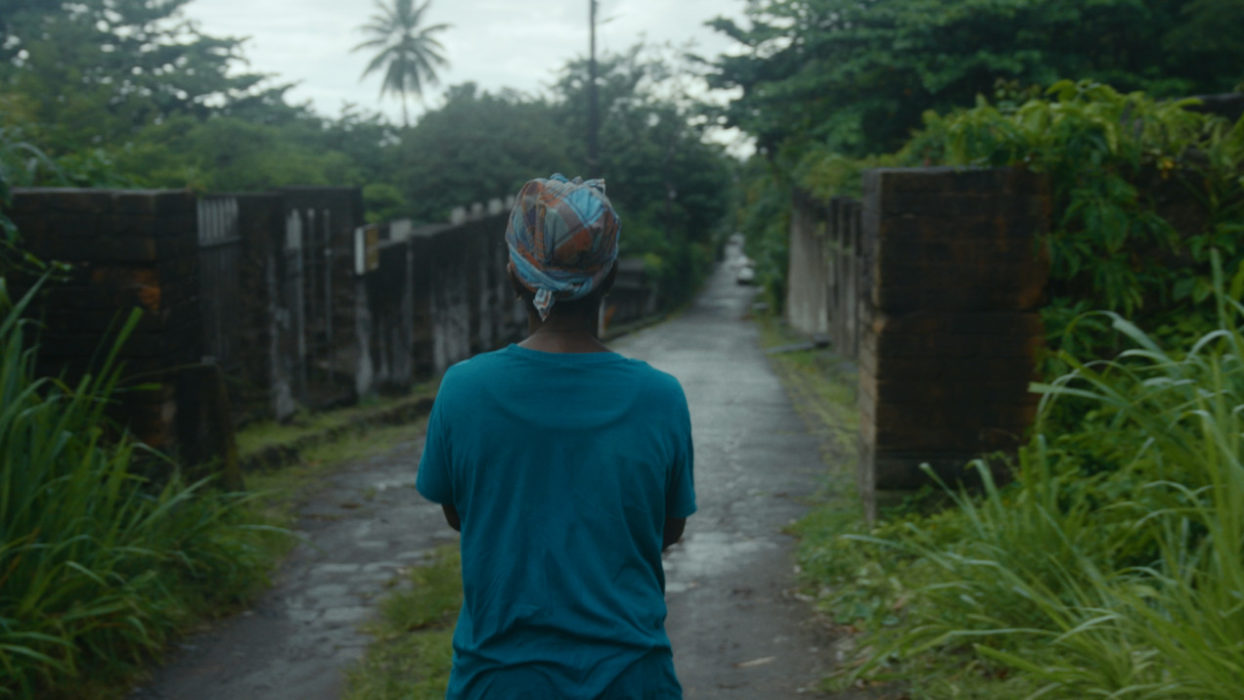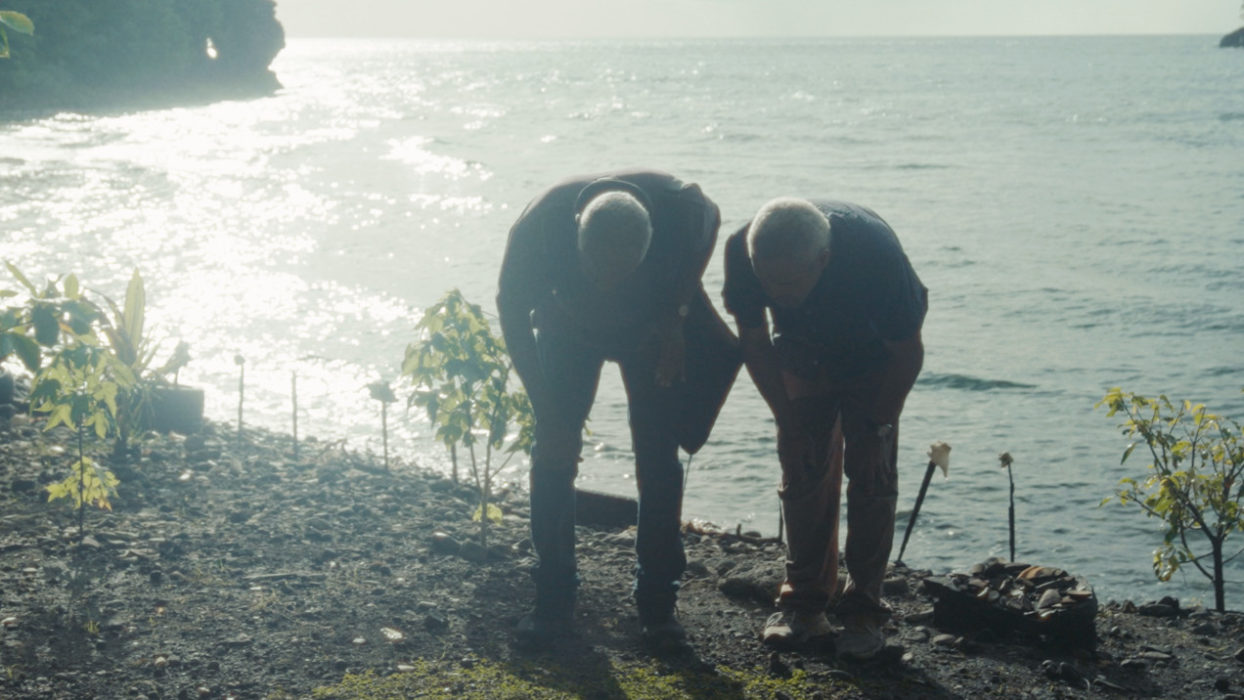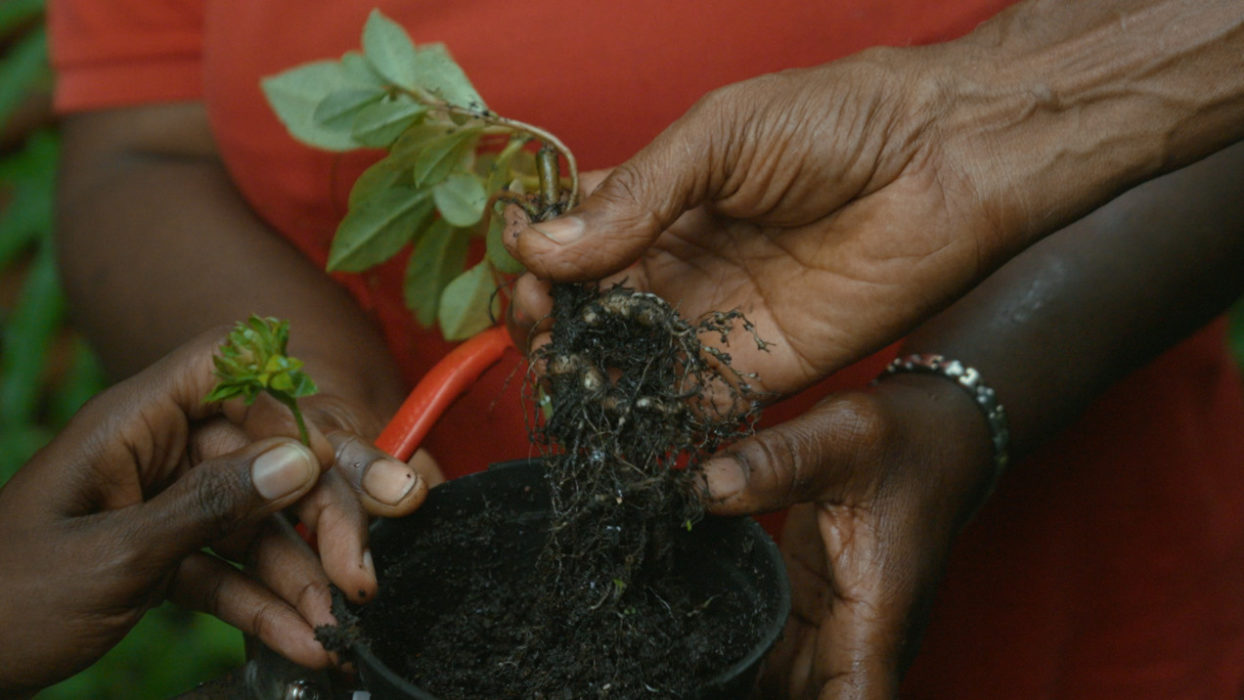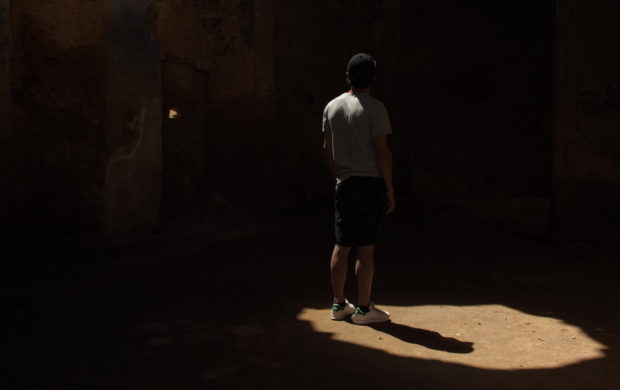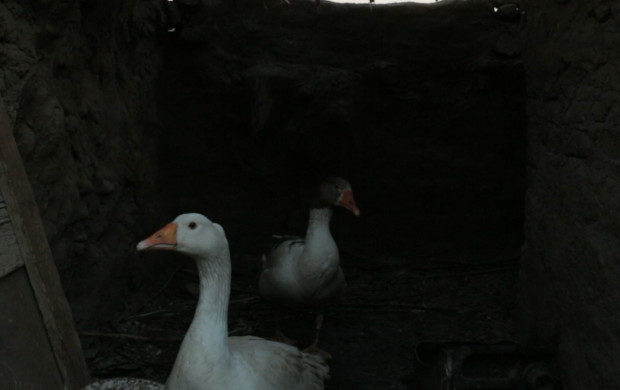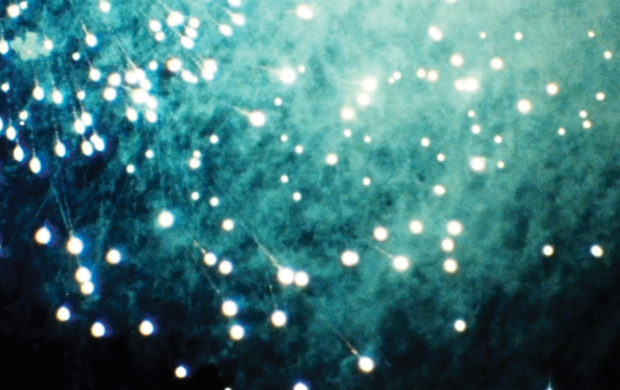Sous les feuilles
Cyclone Dean stirred up the soil in Martinique: a cemetery for the enslaved resurfaced. The
psychiatric hospital came up with the idea of associating this patch of land with an original form of cure. The film interweaves the care of bodies, the colonial footprint and the story told by plants.
It’s a garden and it’s a graveyard. You can come in from the road and catch a glimpse of the island’s colonial history: a master’s house, the ruins of a psychiatric hospital. You can come in through the forest and take in the stories of plants, picking up on the deep-hidden knowledge and on the secret practices of traditional healing. You can come in by following the seed of the Barringtonia tree that floats on the waters, conveying memories of the storm that uncovered the graves of enslaved men and women and those of the Arawaks, the first inhabitants of Martinique. The film sets out on these paths, each one in turn: paths that intersect and wander off-course, tracing a winding trajectory and gradually weaving together the colonial imprint and the ancestral cultures that make up present-day Martinique. In this way, it leads us back, time and time again, to this place that is both a garden and a graveyard. Maybe this is where the beating heart of the island lies hidden: in this place of knowledge, where the past seeps up from the ground, and where the storied landscape soothes the minds of the living and the dead. It could be that this soothing is what all have come to seek at the foot of the Barringtonia tree. The eye carved in its bark casts a kind gaze upon humans—unless it is its mouth, murmuring its story to those who have come here to pay their respects.
Catherine Bizern
Florence Lazar is a French filmmaker and visual artist. For the past 20 years, her videos, photographs, and art installations have been shown in museums and contemporary art centers in France and abroad. In 2019, the Jeu de Paume museum devoted a solo exhibition to her. She has been teaching at the college of art and design of Grenoble-Valence since 2005.
Her work focuses on revealing the emergence of a word, the gestures of an individual in a particular geographical and social context. Historical inquiry and historical transmission are the principal vectors of her work.
Her documentary films construct narratives in which subjective narratives unfold in the face of the authority of history.
